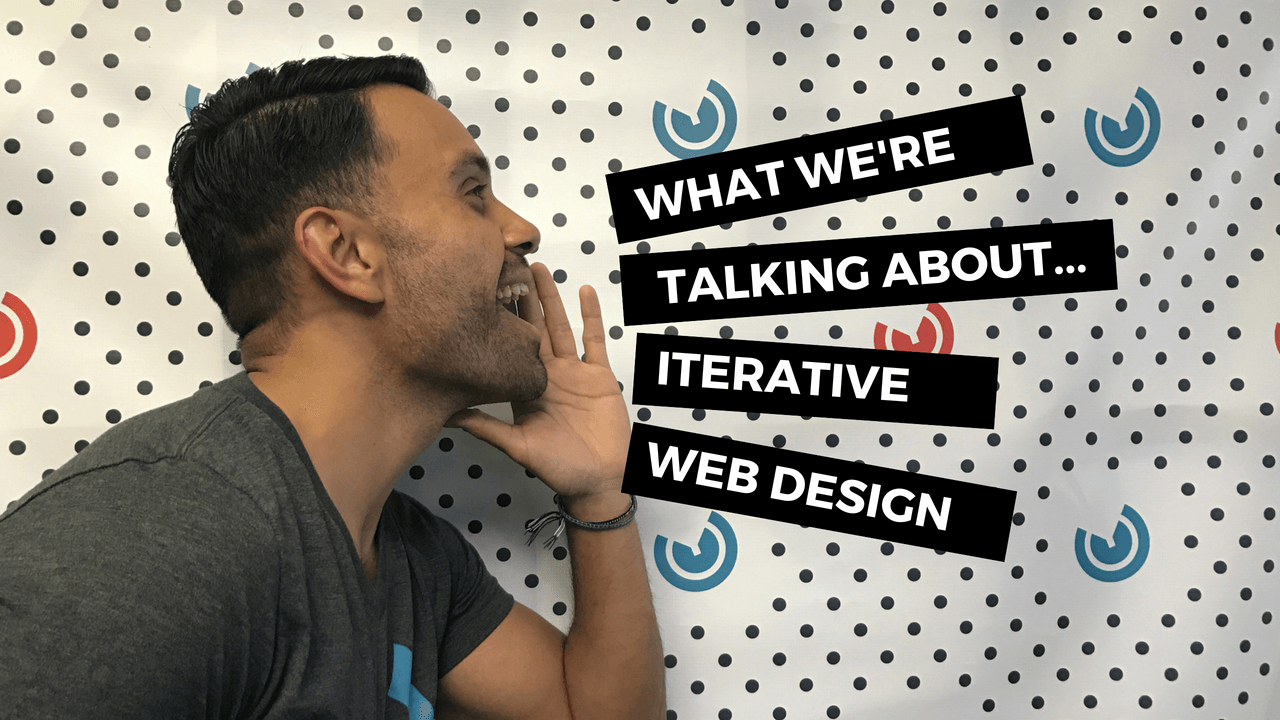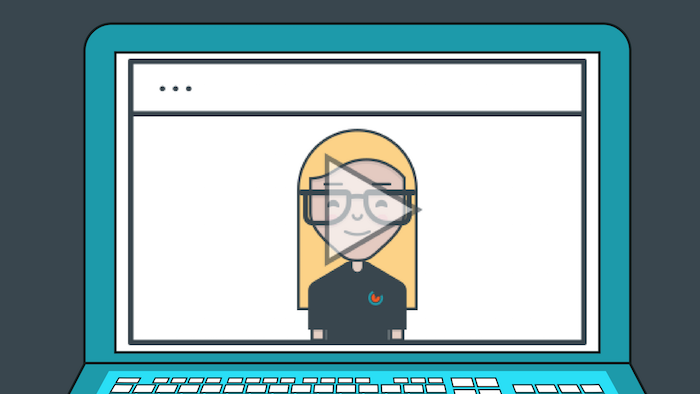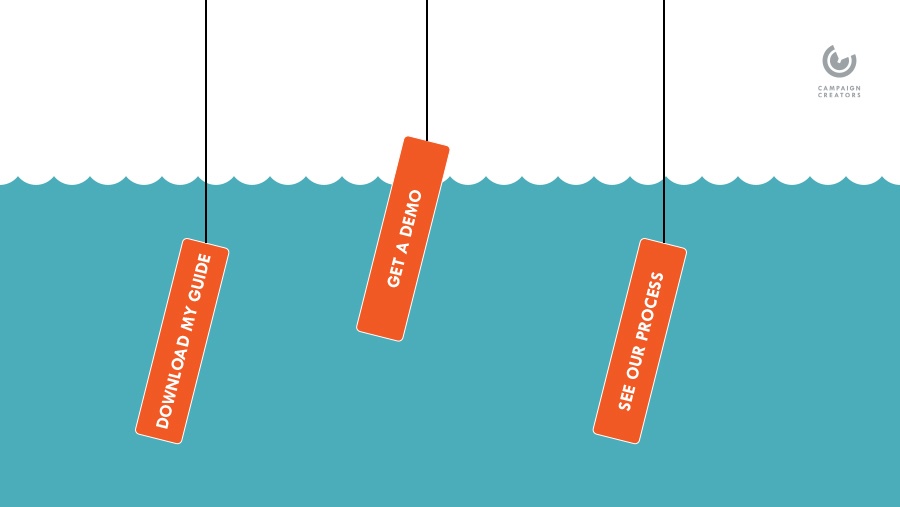What We're Talking About...Iterative Web Design
You have been tasked with a project: design your company a new website. For months you spend day in and day out creating your ideal website, only to...
I know what I am looking for, and would like to chat.
A team of data-driven marketers obsessed with generating revenue for our clients.
Because the proof is in the pudding.
At Campaign Creators we live by three principles: Autonomy, Mastery, Purpose.

You might be familiar with the term iterative or iteration, which involves repeating a process to generate a series of outcomes. Iterative web design follows the same methodology and deals with positioning your client’s digital experience as an ongoing process that requires continuous improvement. Because this type of approach follows a “design as you go” mantra that centers around user data, it’s become a very common way to design and develop websites.
So how can iterative design benefit your organization’s marketing model? According to Smartsheet, there are a few key reasons why the iterative design process is so attractive.
For one, it involves analyzing a LOT of user data through UX testing. Successful marketing requires knowing your target audience. By implementing changes in stages based on user activity, optimizing your website becomes a more seamless experience that simultaneously improves usability and increases your conversion rates.
Secondly, following an iterative model helps vet out any problem areas on your website. Testing and polishing the site as complications happen make ironing out the design process that much more efficient. Wouldn’t you rather take on smaller updates that are easy to stay on top than a larger time-consuming project you might not have accounted time for?
Lastly, nothing runs a successful business model more than a cost-effective approach. The iterative design process allows you to spend your time on what matters most: the production! Instead of laying out the strategy and using your time and energy on providing documentation on how to execute the design, your only focus is on implementing the design.
If you’re curious about hearing what other companies have to say about iterative design, check out our blog “What We’re Talking About...Iterative Web Design.”
Outside of iterative marketing, there lies two other popular, older methods: agile marketing and the waterfall methodology.
The waterfall methodology emphasizes every last piece of the design strategy be completed before any implementation begins. Like the movement of a waterfall, it encompasses the idea that there should be a logical progression of steps from the top down. Some companies still continue to use this process, but most have turned to embrace either an agile or iterative model.
So then the question begs...what makes these two models different?
Agile marketing actually stemmed from software developers in the mid 90’s who believed in not planning any more than you have to. This meant building on top of your design incrementally through phases. Sounds familiar right? Well, that’s because iterative marketing shares and supports a lot of the same values as agile marketing. But there are a few key differences between the two…
Agile marketing embraces the idea of campaigns and runs on a shorter timescale, often giving a distinct deadline through sprints while iterative marketing tends to avoid campaigns and embraces an ongoing process where improvements aren’t time boxed at all.
Since agile marketing first came to exist through software development, it continues to be highly popular among tech-centered companies. Iterative, on the other hand, can be applied to any industry, and thus has a wider spread adoption rate.
Depending on your industry it’s important to find what method works for you! If you would like a little more information on the differences between these two marketing methods, check out episode 21 from the Iterative Marketing Podcast.
If your company is looking towards switching gears to follow an iterative model, you may be wondering how you start. What are the steps required to execute the design successfully?
While it seems like a long process that requires a lot of information, the bulk of iterative web design is repetitive. Follow these general steps provided by Business 2 Community and you’ll have the foundation needed to lay out your strategy.
In this phase, it’s important to align with the company stakeholders. Since your stakeholders are not your users, they provide you with a different angle or perspective you may be missing from the site.
When meeting with your stakeholders be sure to gain an idea of:
Since stakeholders can come from a variety of departments, it is necessary to check in with each department to establish what goals they hope to accomplish through this design process.
Once this onboarding process has been completed it’s vital to run a content audit to evaluate the best way to designing your site’s framework so it’s as conversion friendly as possible.
When creating the new design ask yourself:
In this phase, identify any pain points your users may be experiencing when interacting on your site. Remember, with this new structure you’re creating a foundation to convert your visitors into leads. The best way to determine this is through user interviews. Start by asking your users about their processes to getting to certain areas on your site and/or what they’ve found to be easy or difficult about the current interface.
Other site questions that are valuable to ask during user interviews are:
Your new site should be focused on creating a user-centric journey based off the information and hierarchy your buyer persona’s need to make a decision. While buyer personas should be created in when determining your target market, it’s important to revisit your personas every 6-12 months or when there is a major shift in business strategy (ex. a site-wide redesign).
Using information obtained in this phase and the previous phase, you can now move into creating an IA, followed by a wireframe, and finished with a design.
In this phase, reporting is your best friend! In order to effectively be able to iterate the site, you’ll need user data, and lots of it.
Some important things to be taking note of in this phase are:
Since UX testing requires a deep dive evaluation, the more information you can gather the better. By understanding where your users are having trouble on your site, you can propose alternative designs to find the best ways to get them from point a to point z more efficiently.
As mentioned, iterative web design is an ongoing process. While these 3 steps encompass the basic fundamentals of the iterative model, phase 3 is really an extensive and everlasting step meant to push continuous improvements.
Campaign Creators is a huge supporter of iterative progression and over the last few years has reaped its benefits, growing leaps within the last year alone. To give an idea of where we started to where we are now, below are two screenshots of our homepage.
This iteration of our website didn't give our users much opportunities to navigate throughout while scrolling through the homepage. In addition, our users didn't receive a whole lot of information on our services.
This current iteration of the website gives a clear heading, lists our services, gives users results-driven information through the use of case-studies and testimonials, features educational blog articles, and gives users every chance to navigate the site while they scroll the page.
By implementing iterative web design we have built a model that has:
For more results on our growth, check out our Case Study page! Want more proof? We're also recognized as a top California Web Design Firm on DesignRush.
By doing an extensive content audit and producing core topics that better related to our buyer personas we fine-tuned the site and took to UX testing until we a design that produced results. Similarly, HubSpot underwent a huge site redesign last year. Through a comparable 3 step process where they tracked over 90 different conversion paths, they doubled their conversion rates by the end of their implementation process.
With trackable and tangible results, there’s no surprise why iterative web design continues to be a driving force industry-wide. After all, an iteration takes the pressure off of the designers. By taking out the chase for a eureka moment, it lets the data speak for itself and on behalf of your users. With solid data that sets the stage for a conversion friendly website, you are now one step closer to generating more leads and more revenue.
Happy iterating!
Want some help getting started on implementing a CTA driven strategy to get your users converting on your website? Download our 20-point landing page audit to identify weak spots on your landing pages and discover ways to implement a better strategy throughout your site to improve your conversion rates.

You have been tasked with a project: design your company a new website. For months you spend day in and day out creating your ideal website, only to...

1 min read
Does Video Really Improve Conversion Rates? Quite a few marketers rant and rave about the importance of video in a modern day marketing strategy--...

No conversion rate optimization strategy is complete without an element we can often take for granted: the call-to-action. The stats on the effects...